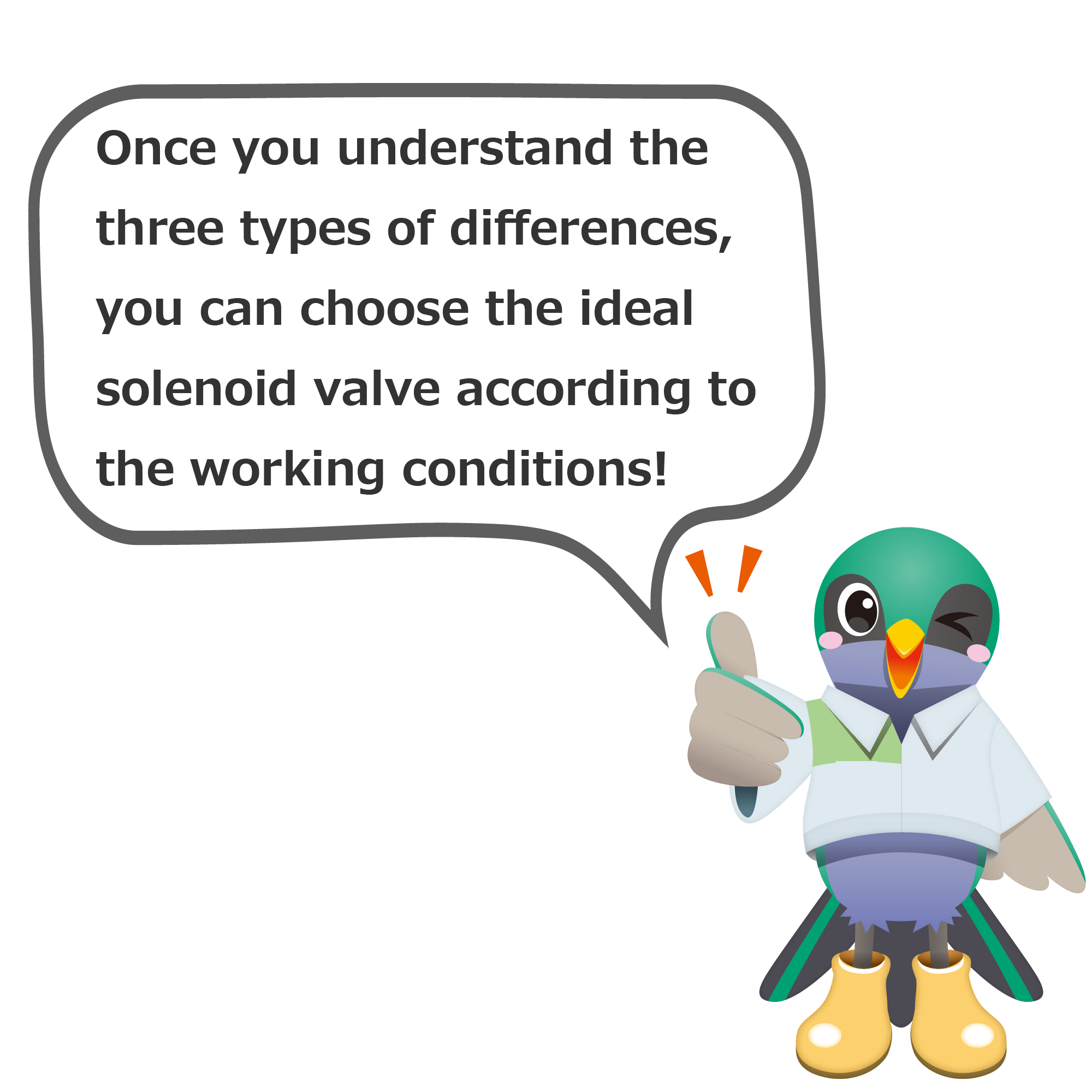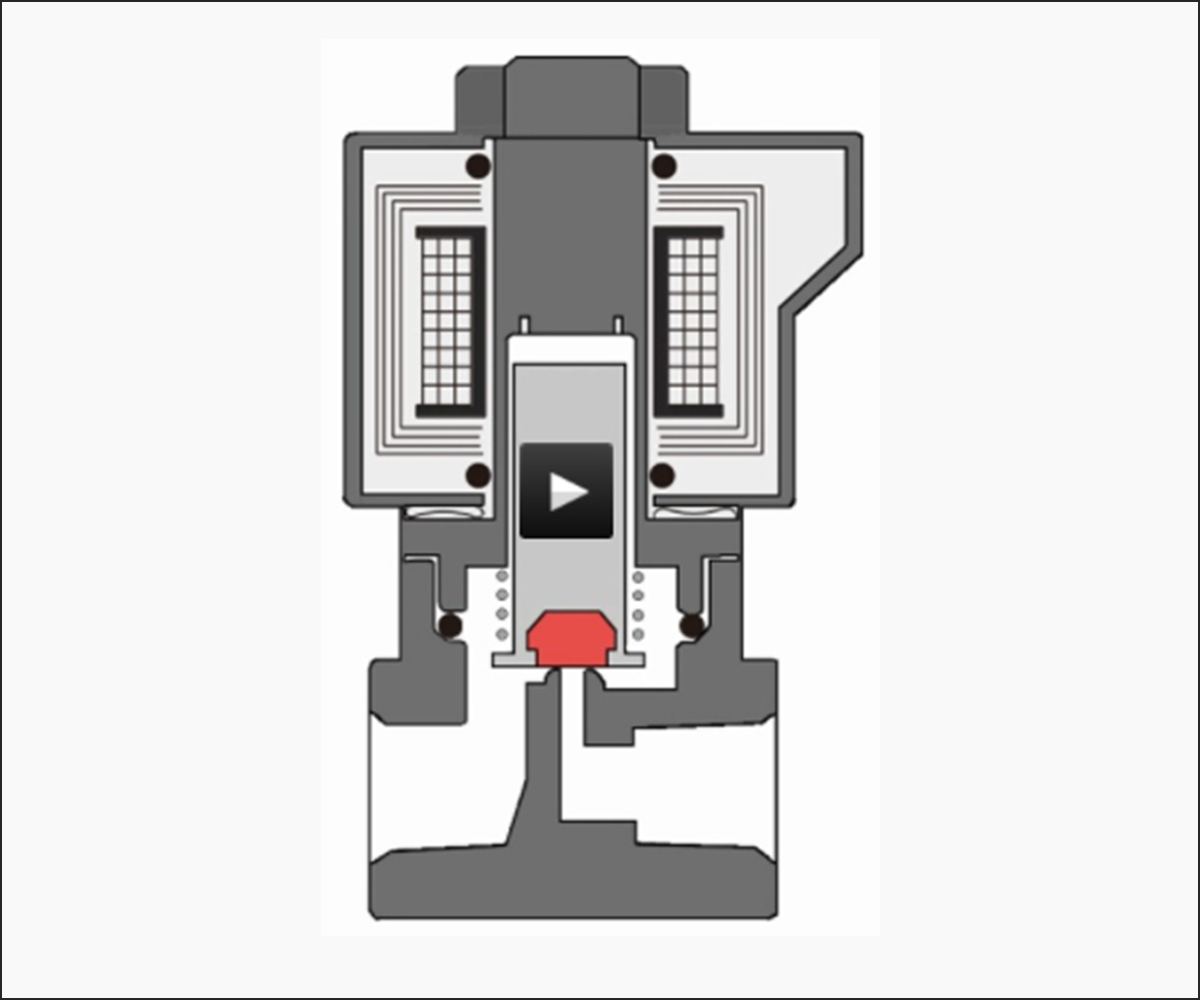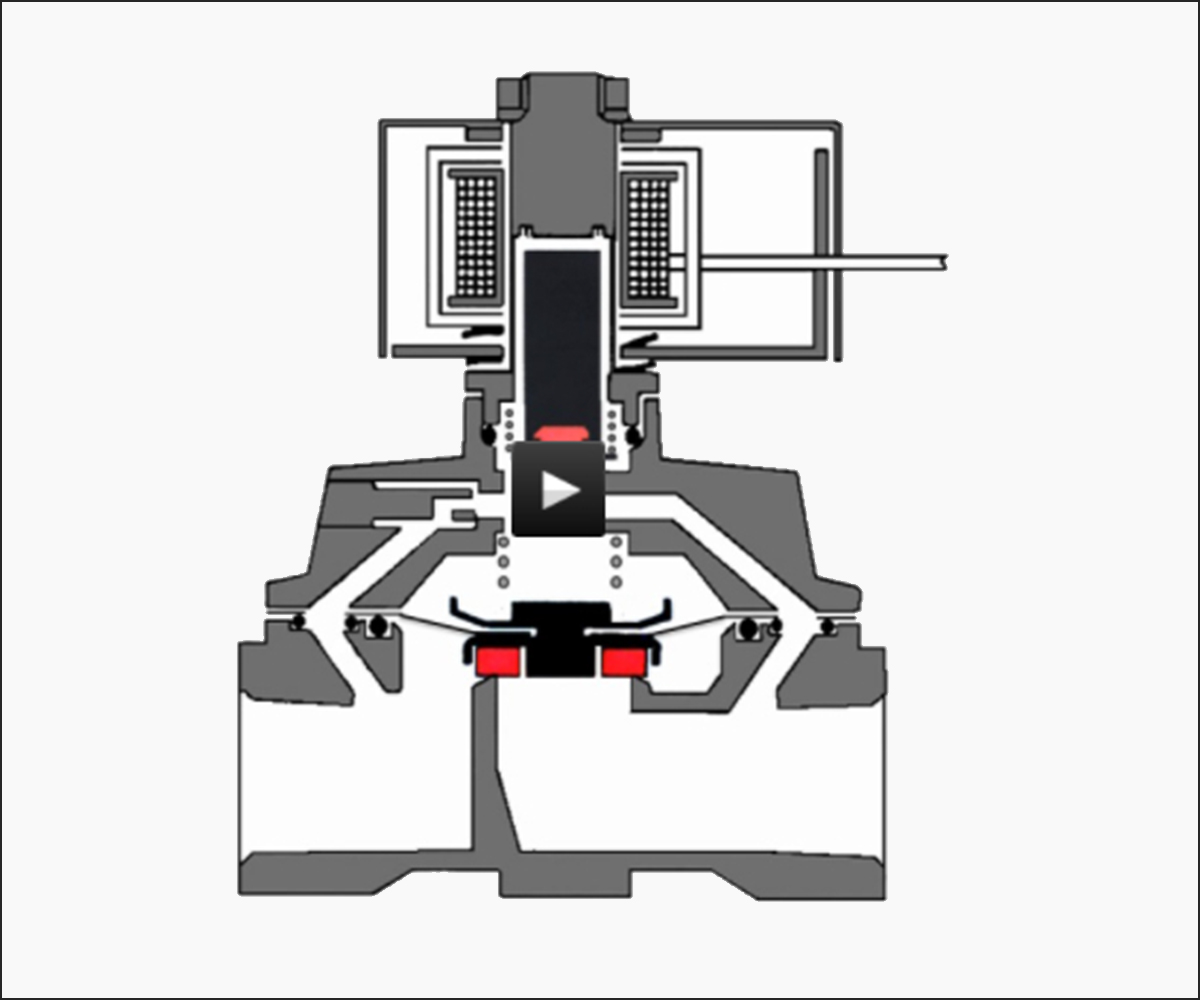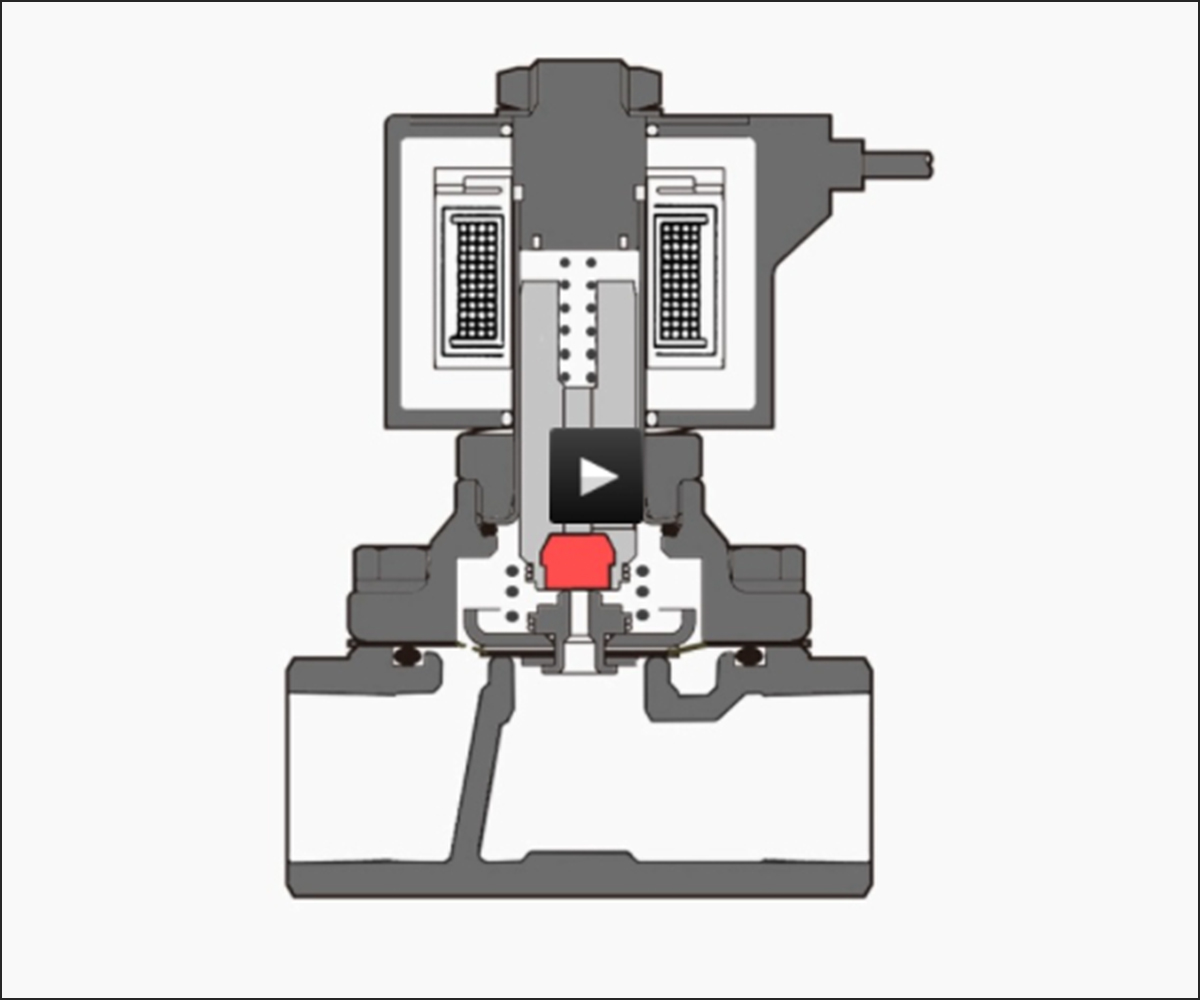Solenoid valve operating method: Have you selected the correct solenoid valve for your fluid?
Differences between direct-acting, pilot-operated, and pilot-kick solenoid valves
There are three types of solenoid valves for fluids: direct acting, pilot operated and pilot kick.
Here are some of the main differences between them!
[Differences in operation]
| Direct acting | Pilot operated | Pilot kick | |
|---|---|---|---|
| Principle of operation | The valve is opened and closed only by the attractive force of an electromagnet (solenoid). | The pilot valve is actuated by an electromagnet (solenoid) and operated by the pressure difference of the fluid.A minimum operating pressure differential is required for actuation. | It is operated by the attractive force of the electromagnet (solenoid) and the kick spring, and actuated by the attractive force and fluid pressure.Operation is performed with no load by using a kick spring. |
| Differential pressure | Operates with no load | Required | Operates with no load |
| Mounting orientation | Unrestricted | Unrestricted (within working pressure differential range) | (1) Vertical to horizontal position with the coil on top (2) Vertical position with the coil on top (3) Unrestricted |
| Port size | Mainly small bore size | Medium and large bore sizes | Medium and large bore sizes |
| Typical models | AB Series, etc. | AP/AD Series, etc. | (1) APK11 Series (2) APK21/ADK21 Series (3) ADK11/ADK12 Series |
When selecting a product, the differential pressure, mounting posture, and connection bore size are especially important points to consider.
Now let's see how the operation differs in the image video.

A lineup of solenoid valves categorized by operation
Direct acting 2, 3-port solenoid valve (general purpose valve)
Pilot 2-port solenoid valve (general purpose valve)
Pilot kick 2-port solenoid valve (General purpose valve)
 Direct acting
Direct acting Pilot operated
Pilot operated Pilot kick
Pilot kick